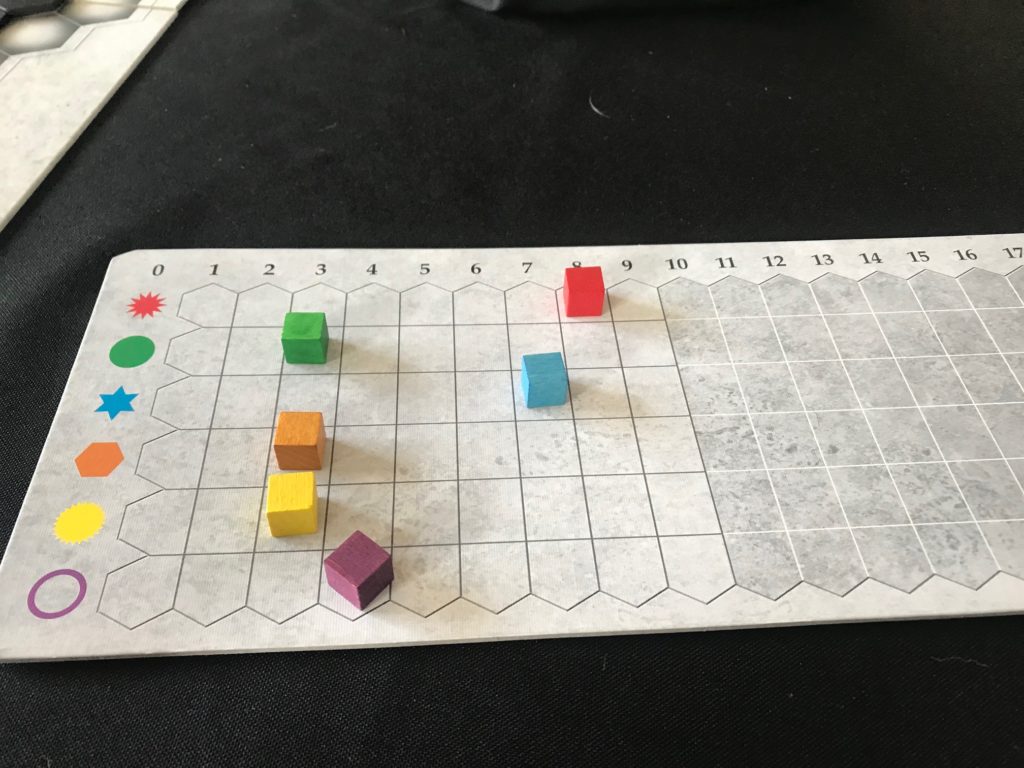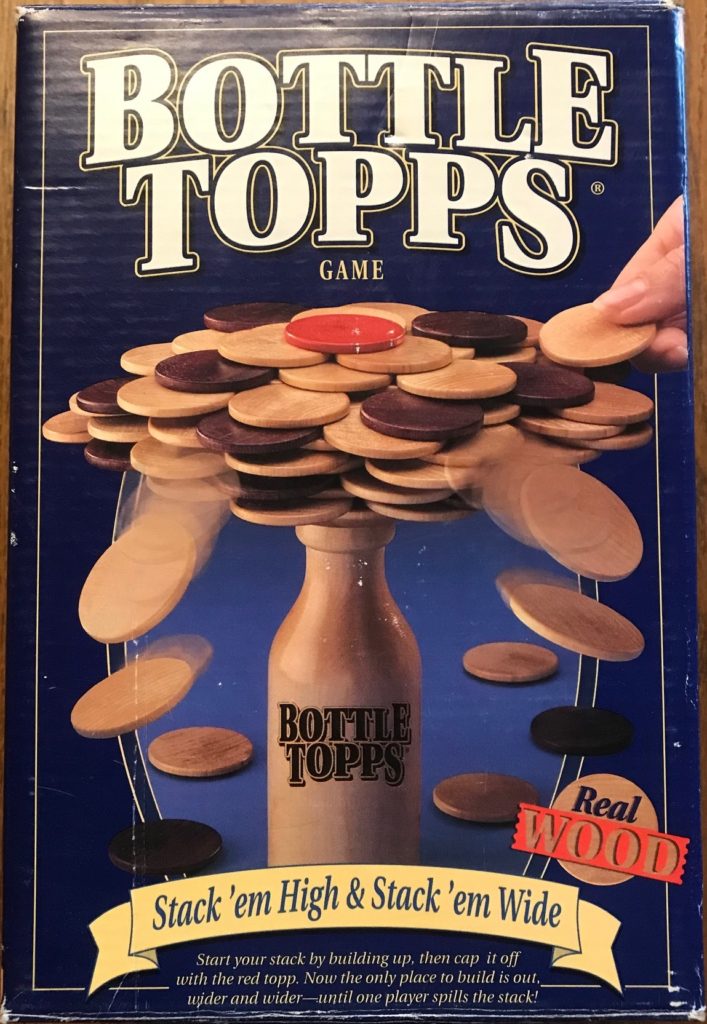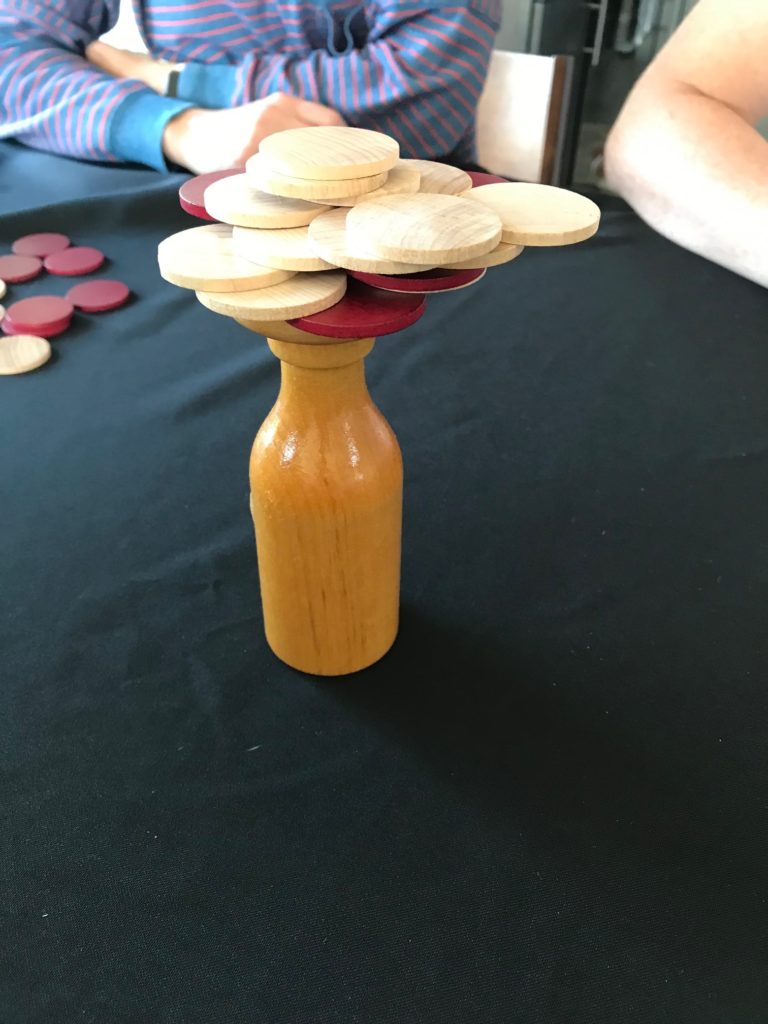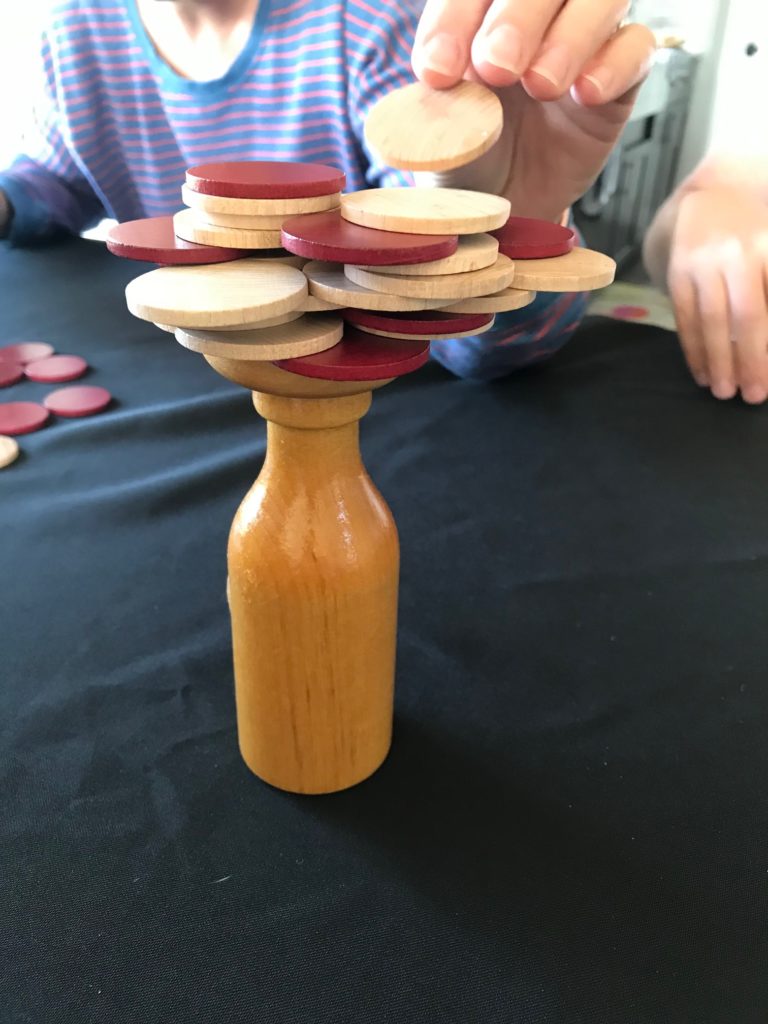Review: Knock Knock Game
Publisher: Milton Bradley
Year: 1982
Tagline: If you know “Who’s There”, you’ll win the Game!
Players: 2 to 4
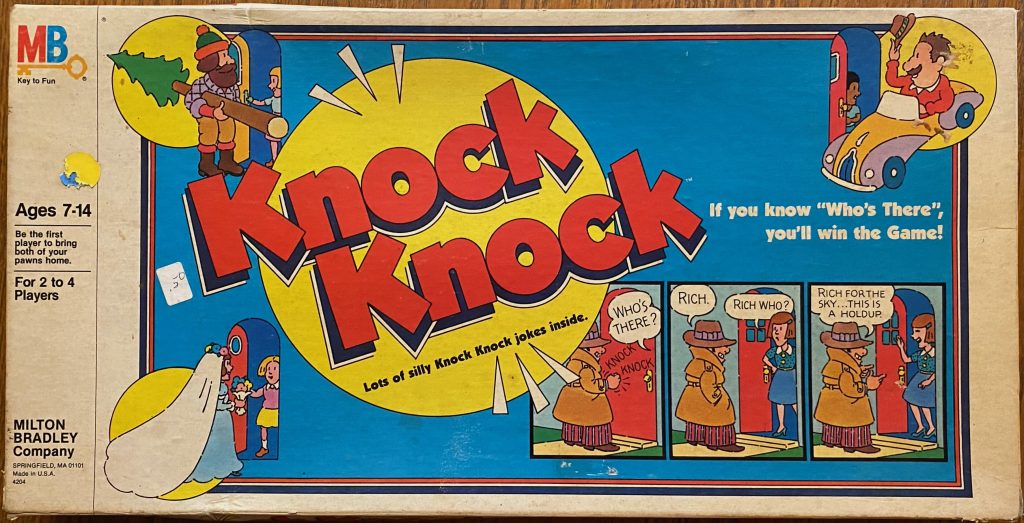
how we met
I stumbled onto Knock Knock Game in the clearance cave of Noble Knights games in the Madison area, which makes the game $2? $3? Thrift price. I was dreading playing after looking through some of the cards because the joke punchlines seemed difficult, but this is the kind of game I buy. So I bought it.
how it plays
Knock Knock Game is a spin and move game with different colored pawns – two each of red, blue, yellow and green. There are corresponding colored doors along the path, as well as grey doors. You also start the game with four Who’s There? cards in your hand. On your turn, you spin the spinner and move one of your pawns that number of spaces on the board.
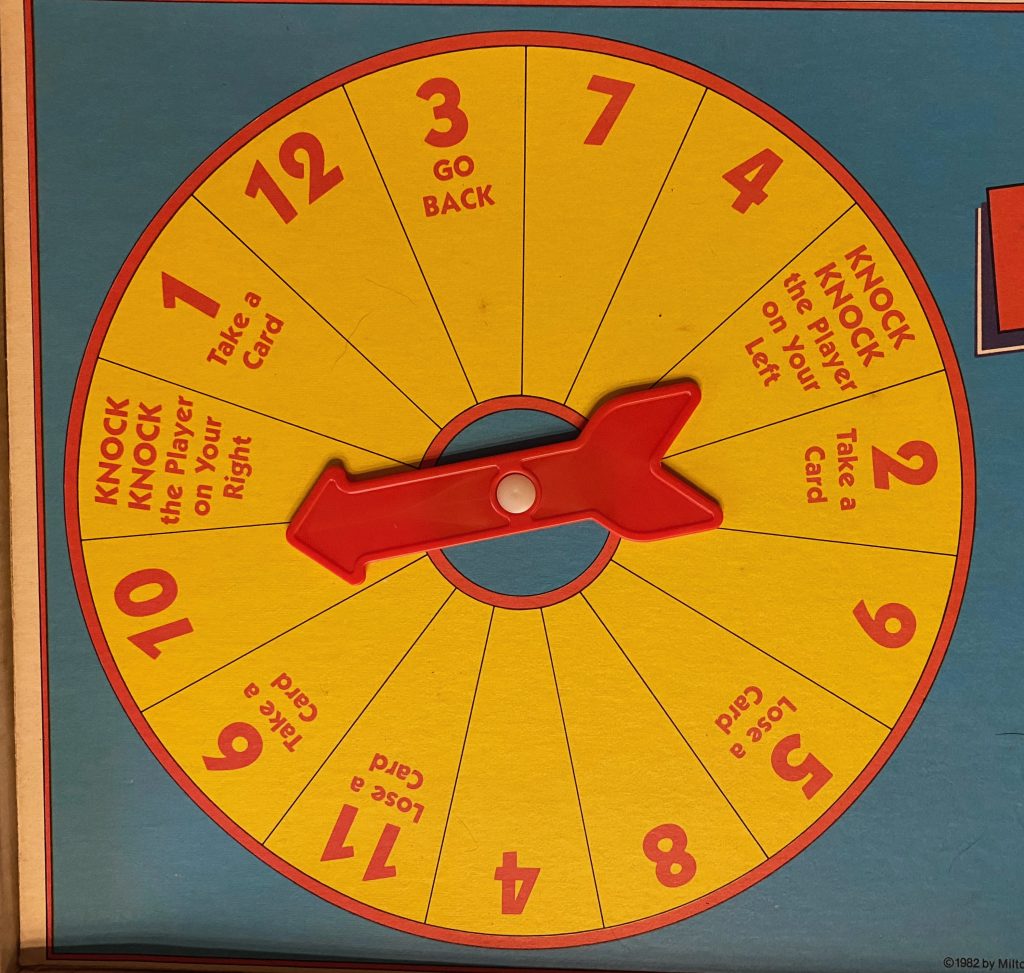
If you land on a door the same color as your pawn, spin again! You get an extra chance to move ahead.
If you land on a grey door, nothing happens.
If you land on a door the same color as an opponent’s pawn, you must Knock Knock them. This involves drawing a Knock Knock card, choosing one of the two jokes to read aloud, and doing so. That player can check their Who’s There? cards to see if they have the answer, or they can guess. The game is clear that the wording need not be exact, but the spirit of the punchline must be there to get a correct answer.
If the player is wrong, they spin the spinner and move one of their pawns backward. If they are correct, that’s it. No extra spins and play moves on.
The first player to get both of their pawns past the Start space wins Knock Knock Game!
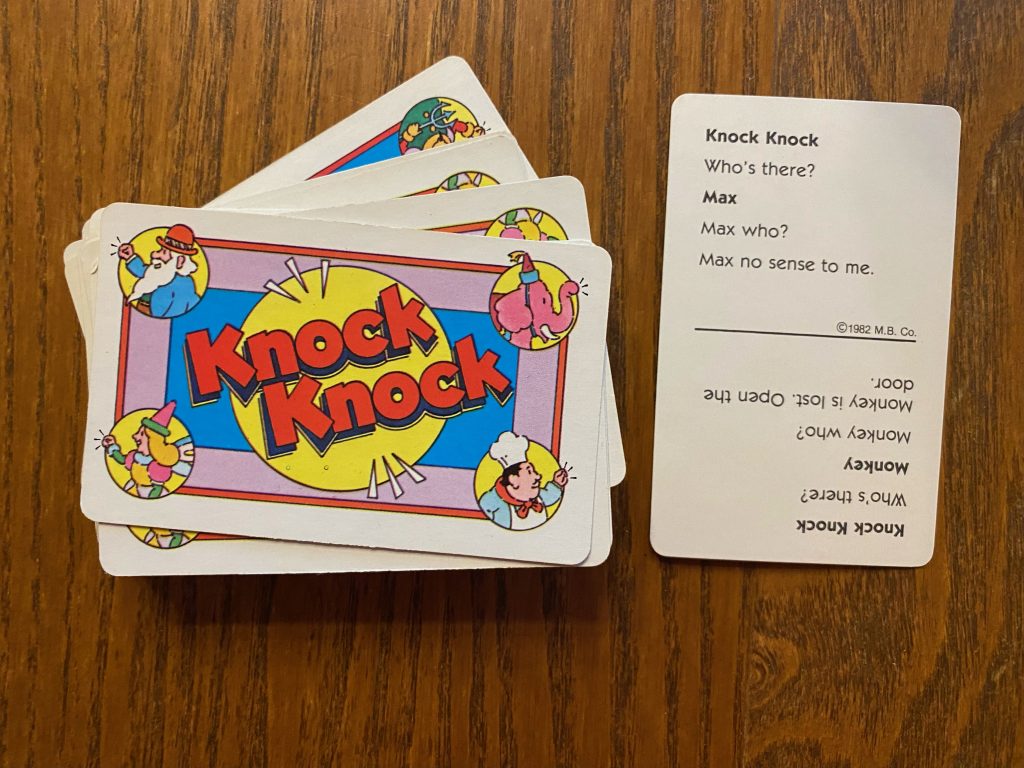
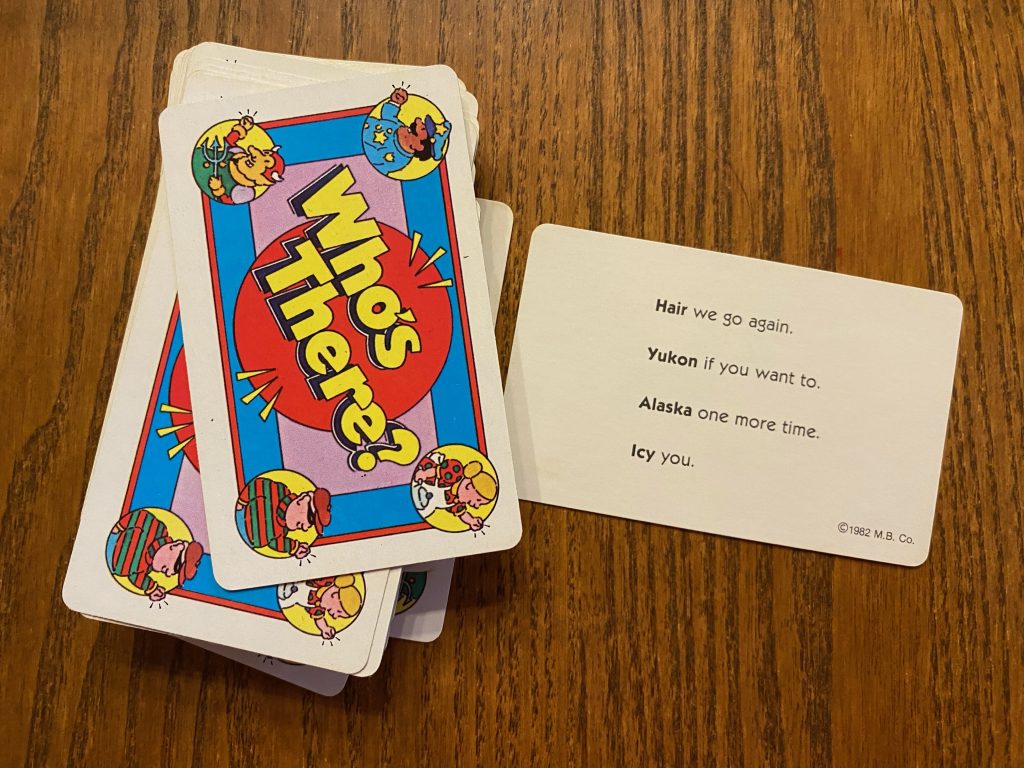
how it went
We played Knock Knock Game during a recent game night with my gaming group. My copy was missing pawns, so I just pulled some spares out of a baggie of extra parts and away we went.
NOTE: I made one change to the rules to speed up our gameplay. We each were in control of one single pawn instead of two. This allowed for a speedier trip around the board.
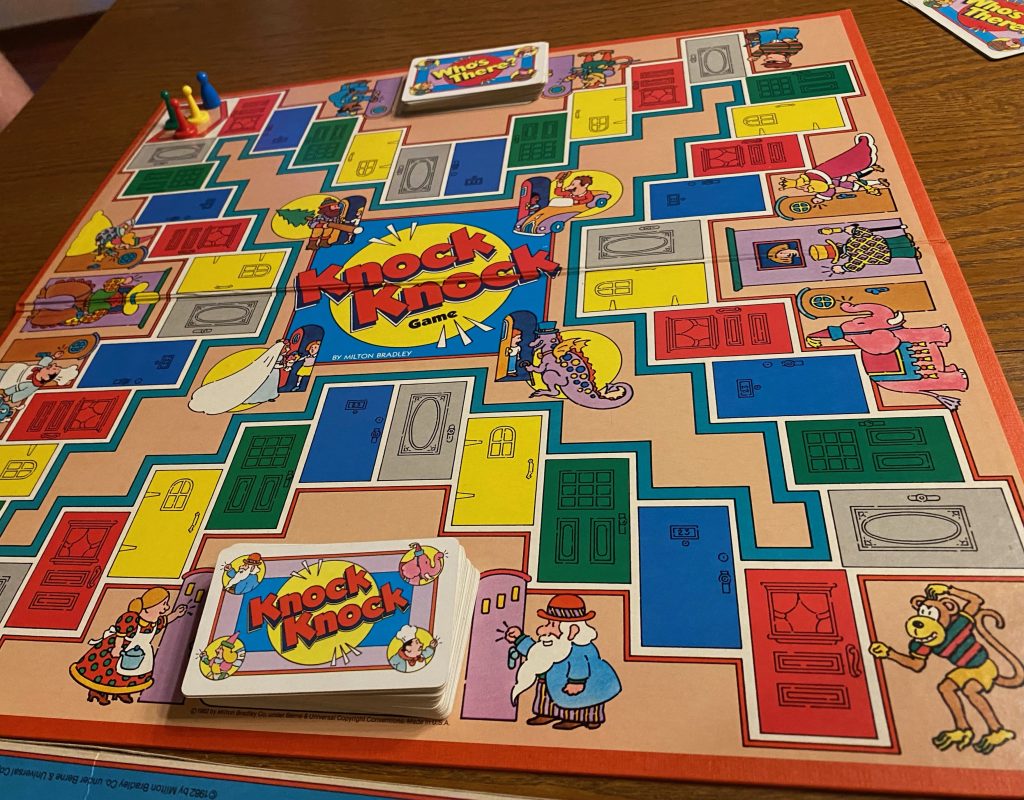
One of the concerns I had playing this game was the difficulty of the jokes. The Who’s There? cards really helped alleviate that concern because you might be asked a joke that you already have the punchline to. Easy. But I wasn’t prepared for some of the antiquated punchlines.

This same method, where a player may have the answer they need on a card in their hand, means that some of the jokes are redundant within the game. This makes sense because if Knock Knock Game were full of too many different jokes then it would be increasingly unlikely for you to have the right punchline in hand, and the entire design would break down. The lack of sheer joke volume was a bit disappointing though, I have to admit. And we went through most of the deck in a single play (shortened by my single pawn decision) with four players.
It is worth noting that when you Knock Knock another player, you are the one saying, “Knock knock!” They say, “Who’s there?” You say who/what and they have to guess the answer — at this point the structure of the Knock Knock joke that has been burned into our brains since our youths breaks down fully. The other player only says “[whatever] who?” if they do not know the answer or choose not to guess. This is off-putting and even confusing at times.
Not too surprisingly, some of the jokes were a stretch. For example, monkey = my key.
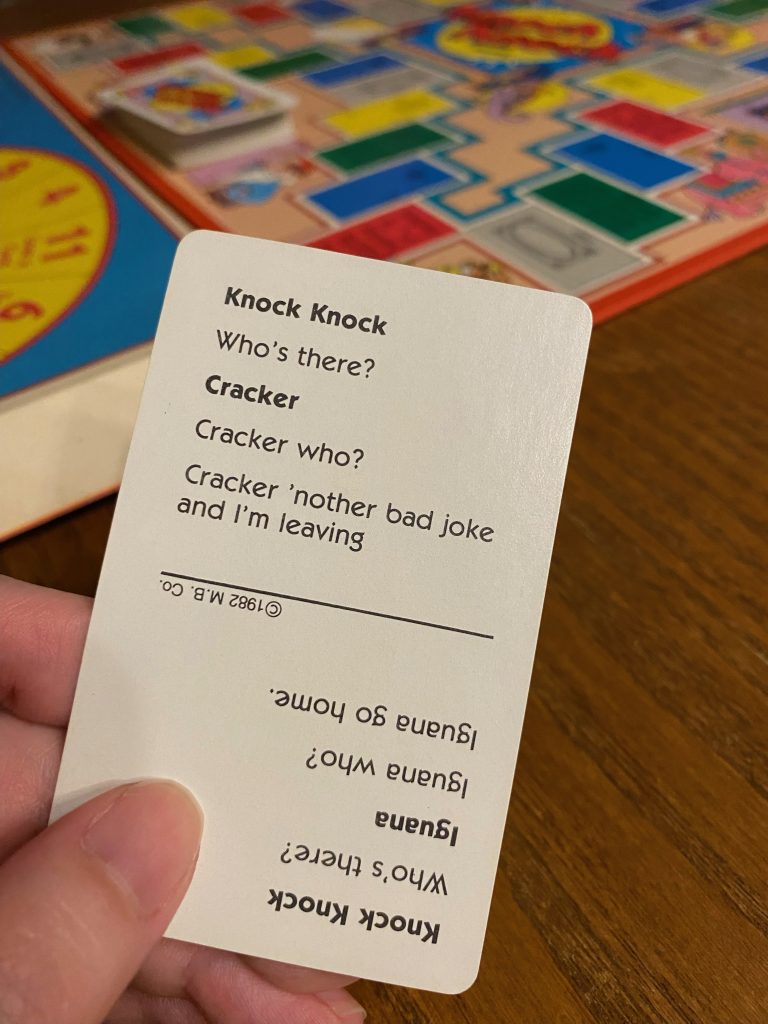
But, for the most part gameplay was straight forward and short enough to be enjoyable. I ended up in the lead after a few lucky spins, and I won Knock Knock Game! I also happened to have the right cards in my hand more often than not. After play, we just sat there and read some of the more bonkers jokes to each other.
play or pass
Pass this one right on by. If you have any reservation about passing up Knock Knock Game, just pick up The Joke Game instead. Knock Knock Game jokes range from a big stretch to positively antique. What ever happened to “Orange you glad I’m not a banana?” classics?















